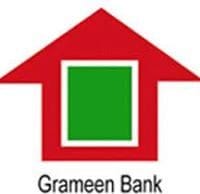History
The origin of Grameen Bank can be traced back to 1976 when Professor Muhammad Yunus, Head of the Rural Economics Program at the University of Chittagong, launched an action research project to examine the possibility of designing a credit delivery system to provide banking services targeted at the rural poor. The Grameen Bank Project (Grameen means “rural” or “village” in Bangla language) came into operation with the following objectives:
- extend banking facilities to poor men and women;
- eliminate the exploitation of the poor by money lenders;
- create opportunities for self-employment for the vast multitude of unemployed people in rural Bangladesh;
- bring the disadvantaged, mostly the women from the poorest households, within the fold of an organizational format which they can understand and manage by themselves; and reverse the age-old vicious circle of “low income, low saving & low investment”, into virtuous circle of “low income, injection of credit, investment, more income, more savings, more investment, more income”.
The action research demonstrated its strength in Jobra (a village adjacent to Chittagong University) and some of the neighboring villages during 1976-1979. With the sponsorship of the central bank of the country and support of the nationalized commercial banks, the project was extended to Tangail district (a district north of Dhaka, the capital city of Bangladesh) in 1979. With the success in Tangail, the project was extended to several other districts in the country. In October 1983, the Grameen Bank Project was transformed into an independent bank by government legislation. Today Grameen Bank is owned by the rural poor whom it serves. Borrowers of the Bank own 90% of its shares, while the remaining 10% is owned by the government.
Muhammad Yunus earned a doctorate in economics from Vanderbilt University in the United States. He was inspired during the Bangladesh famine of 1974 to make a small loan of US$27 to a group of 42 families as start-up money so that they could make items for sale, without the burdens of high interest under predatory lending. Yunus believed that making such loans available to a larger population could stimulate businesses and reduce the widespread rural poverty in Bangladesh.
Yunus developed the principles of the Grameen Bank (literally, “Bank of the Villages” in Bengali) from his research and experience. He began to expand microcredit as a research project together with the Rural Economics Project at Bangladesh’s University of Chittagong to test his method for providing credit and banking services to the rural poor. In 1976, the village of Jobra and other villages near the University of Chittagong became the first areas eligible for service from Grameen Bank.Proving successful, the Bank project, with support from Bangladesh Bank, was extended in 1979 to the Tangail District (to the north of the capital, Dhaka). The bank’s success continued and its services were extended to other districts of Bangladesh.
By a Bangladeshi government ordinance on October 2, 1983, the project was authorized and established as an independent bank. Bankers Ron Grzywinski and Mary Houghton of ShoreBank, a community development bank in Chicago, helped Yunus with the official incorporation of the bank under a grant from the Ford Foundation. The bank’s repayment rate suffered from the economic disruption following the 1998 flood in Bangladesh, but it recovered in the subsequent years. By the beginning of 2005, the bank had loaned over USD 4.7 billion and by the end of 2008, USD 7.6 billion to the poor.
The Bank continues to expand across the nation. By 2006, Grameen Bank branches numbered over 2,100. Its success has inspired similar projects in more than 40 countries around the world, including a World Bank initiative to finance Grameen-type schemes.
The bank has gained its funding from different sources, and the main contributors have shifted over time. In the initial years, donor agencies used to provide the bulk of capital at low rates. By the mid-1990s, the bank started to get most of its funding from the central bank of Bangladesh. More recently, Grameen has started bond sales as a source of finance. The bonds are implicitly subsidised, as they are guaranteed by the Government of Bangladesh, and still they are sold above the bank rate. In 2013, Bangladesh parliament passed ‘Grameen Bank Act’ which replaces the Grameen Bank Ordinance, 1983, authorizing the government to make rules for any aspect of the running of the bank.
The bank is also engaged in social business and entrepreunership fields. In 2009, the Grameen Creative Lab collaborated with the Yunus Centre to created the Global Social Business Summit. The meeting has become the main platform for social businesses worldwide to foster discussions, actions and collaborations to develop effective solutions to the most pressing problems plaguing the world
